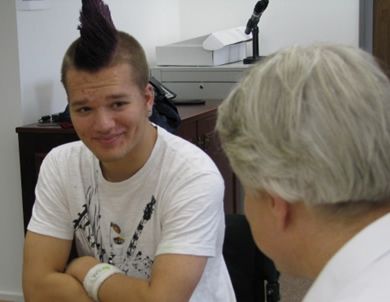Prevention Strategies



Since some high-profile cases, agencies that deal with young people have an increased responsibility to work with each other to prevent substance misuse. This session outlines some of those responsibilities and suggests ways to identify young people at risk of substance misuse and put in place prevention strategies.
Learning Objectives
By the end of this session you will be able to:
- List the predictive factors for substance misuse in young people and the factors that protect them
- Define the links with mental health and well-being
Every Child Matters (2003) established the vision that every child should be able to reach their potential.
The misuse of drugs is known to have adverse effects for young people on both a short-term and long-term basis.
The aim of this session is to help you to be able to predict which young people are likely to misuse drugs and manage their treatment.
- Identify the primary and community partners to engage and seek advice from
Wendi is a registered sick children’s nurse with a BA (Hons) in health and community studies and a BSc (Hons) in specialist nursing practice (community children’s nursing). She is currently working with the Department of Health on primary care for children and young people.
In the Cheshire and Merseyside Child Health Development Programme, Wendi is Strategic Development Lead and Business Manager and deputises for the Chief Executive. She is also Child Health Mapping Lead for the North West and links with the Comprehensive School Improvement Plan (CSIP) on specific pieces of work across commissioning and self assessment.
Her role includes acting as project lead within the Child Health Development Programme for the National Children’s Bureau and she is Chair of the GP network for Cheshire and Merseyside.

- Anaesthesia Fundamentals | Physiology | Ventilatio...
- Posted By eIntegrity Healthcare e-Learning
- Posted Date: 2024-12-26
- Location:Online
- This session describes how and why ventilation and perfusion vary in the healthy lung. Causes of hypoxia, such as hypoventilation, increased dead space and shunt, are discussed to help the trainee explain and manage hypoxia clinically.
- Anaesthesia Fundamentals | Physiology | Pulmonary ...
- Posted By eIntegrity Healthcare e-Learning
- Posted Date: 2024-12-26
- Location:Online
- This session covers the measurement and clinical importance of lung volumes, including functional residual capacity and dead space. Information regarding the performance and interpretation of flow-volume loops is also included.
- Anaesthesia Fundamentals | Physiology | Co2 Carria...
- Posted By eIntegrity Healthcare e-Learning
- Posted Date: 2024-12-26
- Location:Online
- This session covers the physiology of how carbon dioxide is carried by blood, including its conversion into bicarbonate ions and the role of the red blood cell and haemoglobin in this process. The session also describes how buffers work, and the fundament
- Anaesthesia Fundamentals | Physiology | Function o...
- Posted By eIntegrity Healthcare e-Learning
- Posted Date: 2024-12-26
- Location:Online
- This session focusses on the function of haemoglobin in oxygen (O2) carriage from the lungs to other tissues where cells are supplied with the O2 required for oxidative phosphorylation in the mitochondria. We will cover the structure
- Anaesthesia Fundamentals | Physiology | Gaseous Ex...
- Posted By eIntegrity Healthcare e-Learning
- Posted Date: 2024-12-26
- Location:Online
- This session will introduce you to the physiological effects of altitude and the adaptations that occur with acclimatization. It also introduces the pathology and physiology of high pressure and decompression.








